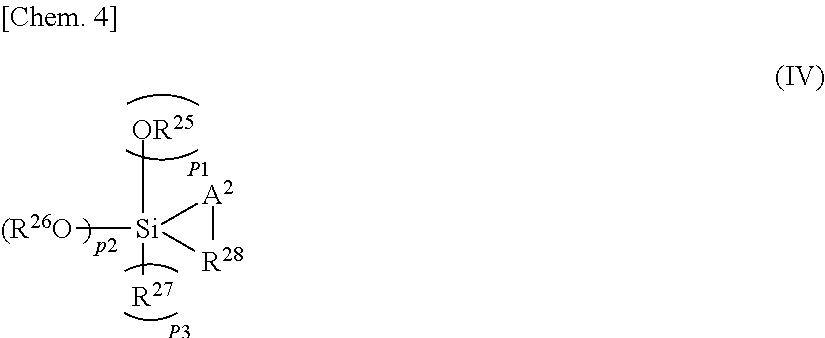Method for producing rubber composition
a technology of composition and rubber, applied in the direction of layered products, etc., can solve the problem of not taking into account the kneading conditions, and achieve the effect of excellent low heat generation property
- Summary
- Abstract
- Description
- Claims
- Application Information
AI Technical Summary
Benefits of technology
Problems solved by technology
Method used
Image
Examples
examples
[0101]The present invention is described in more detail with reference to the following Examples; however, the present invention is not limited at all by the following Examples.
[0102]Heat-generation property (tan δ index) and abrasion resistance as well as the bound styrene content (% by mass) in SBR, the vinyl bond content (%) in the conjugated diene moiety of SBR and the cis-1,4-bond content (%) in BR were measured and evaluated according to the following methods.
Heat-Generation Property (tan δ Index)
[0103]Using a viscoelasticity measuring device (by Rheometric), tan δ of the rubber composition sample was measured at a temperature of 60° C., at a dynamic strain of 5% and at a frequency of 15 Hz. Based on the tan δ in Comparative Example 3, 5, 7 or 9, as referred to 100, the data were expressed as index indication according to the following formula. The samples having a smaller index value have a better low-heat-generation property and have a smaller hysteresis loss.
Heat-Generation...
examples 1 to 19
, and Comparative Examples 1 to 28
[0127]According to the formulation and the kneading method shown in Table 2, the components were mixed in a Banbury mixer in such a manner that the highest temperature of the rubber composition in the first stage of kneading (kneading time: 3 minutes) could be 150° C. except in Comparative Example 2, thereby preparing 46 types of rubber compositions. The highest temperature of the rubber composition in the first stage of kneading (kneading time: 6 minutes) in Comparative Example 2 was 180° C. In the first stage of kneading of the rubber compositions 1, 3, 5 and 5 shown in Table 2, the rubber component (A), all of the inorganic filler (B) and the silane coupling agent (C) were kneaded, and after 60 seconds, the promoter (D) 1,3-diphenylguanidine, a type of guanidine was added thereto and further kneaded. On the other hand, in the first stage of kneading of the rubber compositions 2, 4, 6 and 8 in Table 2, the promoter (D) was not added. Thus obtained...
PUM
| Property | Measurement | Unit |
|---|---|---|
| Temperature | aaaaa | aaaaa |
| Percent by mass | aaaaa | aaaaa |
| Mass | aaaaa | aaaaa |
Abstract
Description
Claims
Application Information
 Login to View More
Login to View More - Generate Ideas
- Intellectual Property
- Life Sciences
- Materials
- Tech Scout
- Unparalleled Data Quality
- Higher Quality Content
- 60% Fewer Hallucinations
Browse by: Latest US Patents, China's latest patents, Technical Efficacy Thesaurus, Application Domain, Technology Topic, Popular Technical Reports.
© 2025 PatSnap. All rights reserved.Legal|Privacy policy|Modern Slavery Act Transparency Statement|Sitemap|About US| Contact US: help@patsnap.com



